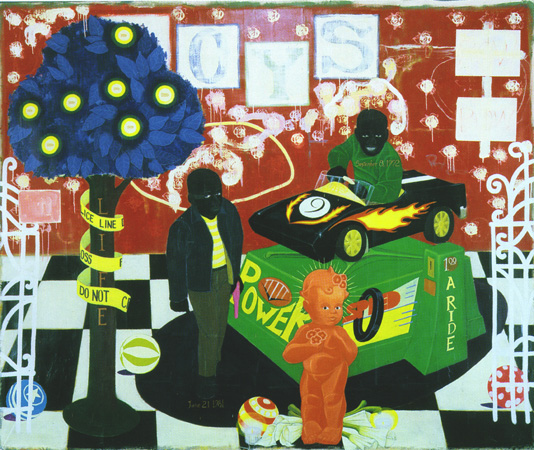Kerry James Marshall, a retrospective of whose work is on display at Modern Art, Oxford, is one of the leading American artists of his generation. His pictures, formed from a clever melange of styles and subjects, draw on a wide range of sources from both high and low art. They are quietly militant without ever descending to stridency – amounting to a series of glancingly ironic commentaries, both on the nature of black urban experience in modern America, and on the difficulty of representing it.
The artist’s painting is inseparable from his sense of politics, which was shaped during his childhood and early adolescence. He was born in 1955 in Birmingham, Alabama, and grew up at the height of the American civil rights movement. In 1963, Marshall’s family moved to Watts in southern Los Angeles. Two years later, when he was ten, he witnessed the notorious Watts riots. A few blocks away from where he lived, the Black Panthers had their headquarters, and shoot-outs between members of their organisation and the Los Angeles Police Department were a common occurrence.
Marshall decided to be a painter at an early age, inspired by an enlightened kindergarten teacher who showed him books about the history of art and encouraged him in his own drawing and painting. He remembers going to the Los Angeles County Museum of Art when he was young and being struck by the almost complete absence of representations of black people. As he studied art history in greater depth, he found the same pattern repeated. The occasional black king might appear in Renaissance depictions of the nativity; Rubens sometimes included blacks in his battle paintings, as did Hogarth in his scenes of London life; but otherwise, generally speaking, he found a gaping void. This was something that he decided, with...

Kerry James Marshall at Modern Art, Oxford 2006
03-09-2006

